DCS World Kfir: Combat Proven in Real Life!
The DCS World Kfir is on its way, and we cannot wait! The world of Digital Combat Simulator (DCS) is about to welcome an iconic fighter jet: the IAI Kfir. This blog delves into the anticipated module—its developer, development progress, and release expectations—while exploring the fascinating history and combat legacy of the Kfir. Let’s unpack everything you need to know about the DCS World Kfir and the legendary aircraft behind it. Snubbed in the DCS 2025 & beyond but important enough to be recognized by those 80’s multiplayer aficionados.
Please use the links to jump to items you’re interested in.
Back brings you to the TOP.
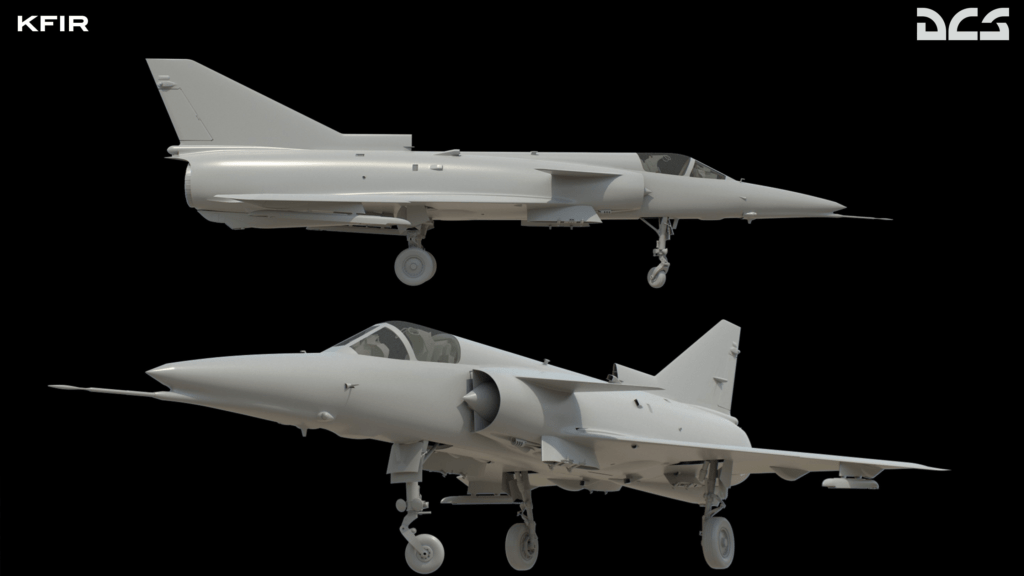
- Who Is Developing the DCS World Kfir?
- The DCS World Kfir Module: Real-World History of Adversaries and Combat Effectiveness
- Advantages in Air-to-Air Combat
- Historical Combat Effectiveness
- Weapons Loadout
Who Is Developing the DCS World Kfir?
The DCS World Kfir module is being developed by Aeronáutica Digital (Aerges), a studio renowned for its high-fidelity aircraft simulations. Aerges has garnered acclaim for previous modules, such as the Mirage F1, and their experience ensures a quality product faithful to the Kfir’s capabilities.
The Kfir has been in development for several months, with Aerges focusing on recreating the aircraft’s unique avionics, aerodynamics, and combat systems. As of now, the project is reportedly in its advanced stages, with ongoing refinements to its flight model and system integration. While no official release date has been announced, expectations lean toward a 2025 release, aligning with DCS’s recent roadmap updates.

The History of the Kfir: Origins and Creation
The Kfir (Hebrew for “Lion Cub”) is a pivotal chapter in the history of Israel’s aerospace industry and represents a major leap in indigenous aircraft design and development. This delta-wing, multi-role fighter was created to address Israel’s strategic and operational needs during the late 1960s and early 1970s. The story of the Kfir’s origins and creation is a fascinating tale of innovation, necessity, and ingenuity.
Post-Six Day War Challenges
After the Six-Day War in 1967, Israel faced significant geopolitical and military challenges, including arms embargoes that limited its access to advanced fighter jets. France, which had been a key supplier of Dassault Mirage III fighters, imposed an arms embargo, cutting off Israel’s supply of parts and new aircraft. This situation necessitated the development of a domestic solution to maintain Israel’s aerial superiority.
The Birth of an Indigenous Fighter
Israel Aircraft Industries (IAI) spearheaded the initiative to create a homegrown fighter. Using its fleet of Mirage III jets as a base, IAI reverse-engineered the aircraft and combined it with locally produced components to create the Nesher, a predecessor to the Kfir. However, the need for an even more capable aircraft led to the birth of the Kfir.
The Kfir project was born out of a desire to modernize the Mirage III design and enhance its performance with a more powerful engine and advanced avionics. The heart of this transformation was the adoption of the General Electric J79 turbojet engine, the same powerplant used in the American F-4 Phantom II. This required extensive modification of the airframe to accommodate the new engine, including changes to the intakes, fuselage, and cooling systems.
- Joystick / HOTAS – AMAZON.com
- Rudder Pedals – AMAZON.com
- Throttle Quadrant – AMAZON.com
- Gaming Chair – AMAZON.com
- VR Headset – AMAZON.com
Design Innovations

The Kfir retained the Mirage III’s iconic delta-wing configuration, which provided excellent high-speed and high-altitude performance. However, IAI introduced numerous improvements, including:
- Aerodynamic refinements for improved maneuverability and handling.
- Upgraded avionics systems to enhance combat effectiveness.
- Reinforced structure to handle the increased power and weight of the J79 engine.
First Flight and Operational Service
The Kfir first took to the skies in the early 1970s and officially entered service with the Israeli Air Force (IAF) in 1975. It quickly became a key asset, serving as a multi-role fighter capable of air-to-air combat and ground-attack missions. The Kfir played a significant role in maintaining Israel’s air superiority during a period of heightened regional tensions.
Export Success and Legacy
The Kfir’s success was not limited to Israel. It was exported to several nations, including Colombia, Ecuador, and Sri Lanka. The aircraft underwent numerous upgrades over the years, with variants like the Kfir C2, C7, and CE emerging to meet different operational needs.
Today, the Kfir is celebrated as a testament to Israel’s aerospace ingenuity and remains an iconic platform for aviation enthusiasts.
The Kfir in DCS World
The DCS World Kfir module brings this legendary aircraft to life in the world of digital combat simulation. Pilots can experience the unique performance characteristics of the J79 engine and master the delta-wing design’s nuances. Whether engaging in air-to-air combat or executing precision ground strikes, the DCS World Kfir offers players an opportunity to immerse themselves in the history and capabilities of this remarkable fighter.

This module provides not only a faithful recreation of the Kfir’s flight and combat systems but also an appreciation of its historical significance, making it a must-have for enthusiasts of military aviation and simulation.
The DCS World Kfir Module: Real-World History of Adversaries and Combat Effectiveness
The DCS World Kfir module faithfully recreates one of Israel’s most iconic fighter jets, the Kfir, allowing players to experience its real-world historical engagements and combat characteristics. In the real world, the Kfir faced various adversaries throughout its service life, both in Israeli Air Force (IAF) operations and its export roles.
Understanding the adversaries and the Kfir’s air-to-air combat advantages and disadvantages provides insight into its operational significance.
Immediate Adversaries
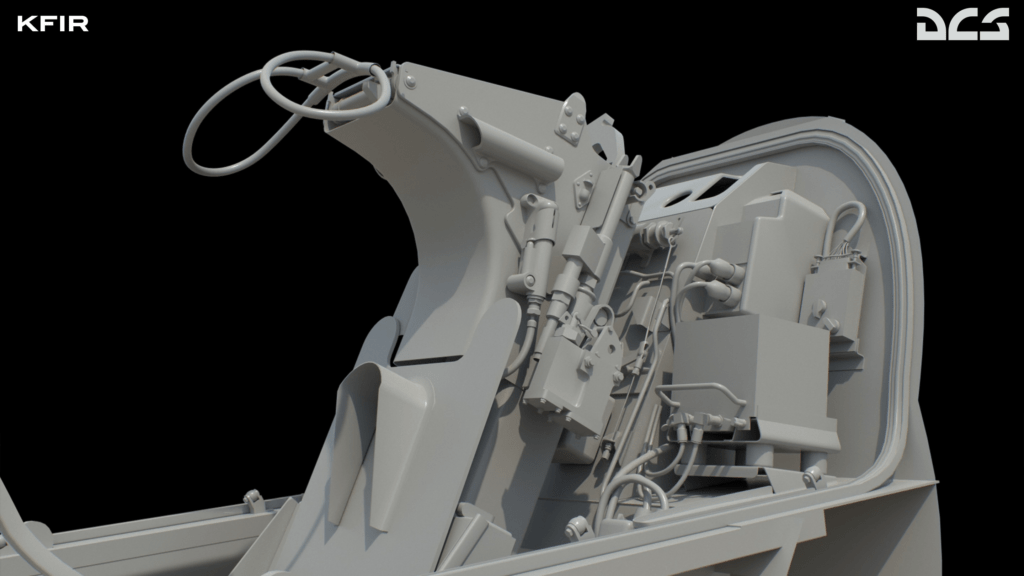
- Arab MiG Fighters (Israeli Service)
During the 1970s and 1980s, Israel’s regional adversaries fielded a variety of Soviet-designed MiG aircraft, including the MiG-21 and MiG-23.- MiG-21: Known for its agility and small size, the MiG-21 was a challenging opponent in dogfights, often requiring superior tactics and pilot skill to defeat.
- MiG-23: A more advanced platform with beyond-visual-range (BVR) capabilities, the MiG-23 posed a significant threat due to its powerful radar and air-to-air missiles.
- Fighter Jets in Export Roles
In addition to its use by Israel, the Kfir was exported to countries like Colombia, Ecuador, and Sri Lanka, where it encountered aircraft such as the Mirage 5 and MiG-27 in localized conflicts.- Mirage 5: A relative of the Mirage III and similar to the Kfir in design philosophy, the Mirage 5 represented an evenly matched adversary in terms of speed and performance.
- MiG-27: Though primarily a ground-attack aircraft, the MiG-27 could engage in air-to-air combat when necessary, requiring Kfir pilots to maintain a tactical advantage.
Advantages in Air-to-Air Combat
- High-Speed Performance
Powered by the General Electric J79 turbojet engine, the Kfir had impressive acceleration and a top speed of Mach 2. This allowed it to outpace many adversaries in straight-line performance. - Delta-Wing Maneuverability
The Kfir’s delta-wing design provided excellent stability and high-speed handling, making it an effective platform for energy-based tactics, especially in vertical combat maneuvers. - Advanced Avionics (For Its Time)
The Kfir was equipped with advanced radar systems and weapons integration compared to many of its contemporaries. This allowed it to employ a variety of air-to-air missiles effectively, including short-range IR-guided missiles. - Tactical Flexibility
With its multi-role capability, the Kfir could seamlessly transition between air-to-air combat and ground-attack missions, giving it a versatile edge in complex operational environments.
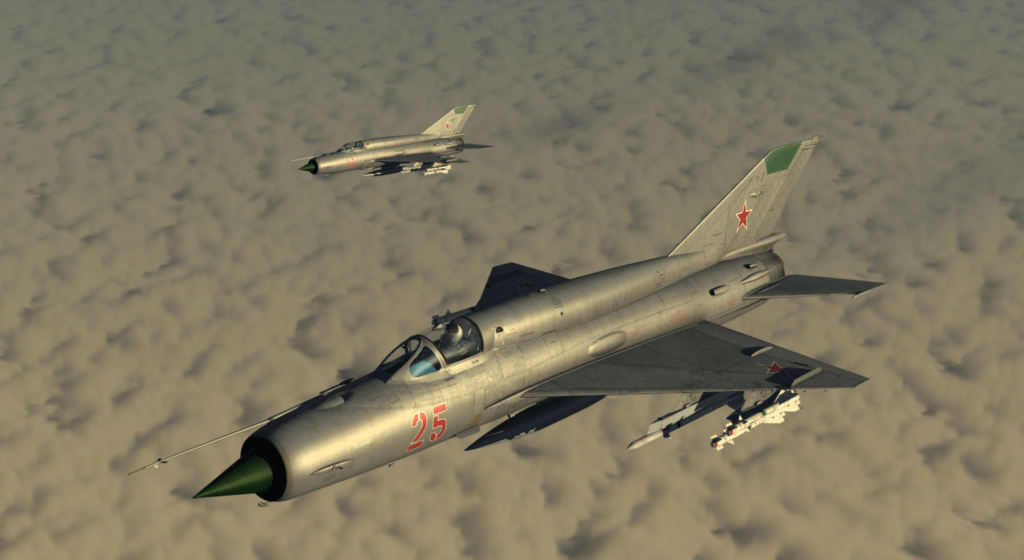
Disadvantages in Air-to-Air Combat
- Delta-Wing Limitations
While the delta-wing design provided advantages in stability and high-speed performance, it came at the cost of reduced low-speed agility. This made the Kfir less effective in tight turning engagements, particularly against more nimble adversaries like the MiG-21. - Reliance on Speed and Energy
The Kfir’s combat doctrine emphasized energy tactics, which required pilots to maintain superior speed and altitude. If caught in prolonged turning engagements, the Kfir could be outmaneuvered by smaller, more agile opponents. - Limited Beyond-Visual-Range (BVR) Capability
Compared to newer adversaries with advanced radar-guided missile systems, the Kfir’s BVR capabilities were limited. While it could hold its own in dogfights, it was less equipped to dominate engagements beyond visual range. - Payload Constraints
The Kfir’s external fuel tanks and weapon loadouts often impacted its overall maneuverability and endurance during combat. Pilots had to carefully manage fuel and weapon systems to maximize combat effectiveness.
Historical Combat Effectiveness
In real-world engagements, the Kfir demonstrated its strengths by achieving air superiority in multiple conflicts. Its speed, reliability, and multi-role versatility allowed it to excel against Soviet-designed adversaries in Israeli service. In export roles, Kfir’s proved valuable assets for nations operating in contested airspaces, such as Colombia’s engagements against narcoterrorism forces. However, its limitations, especially in close-quarters dogfights, necessitated skilled pilots and effective tactics to leverage its strengths.
The Kfir in DCS World
The DCS World Kfir module offers a highly detailed simulation of these real-world dynamics, challenging players to master the aircraft’s energy-focused combat style and exploit its high-speed performance while managing its limitations in low-speed agility. Whether recreating historical battles against Soviet MiGs or engaging in custom scenarios, players can fully immerse themselves in the history and operational nuances of this iconic fighter.
Kfir’s Systems, Weapons, and Roles in Combat
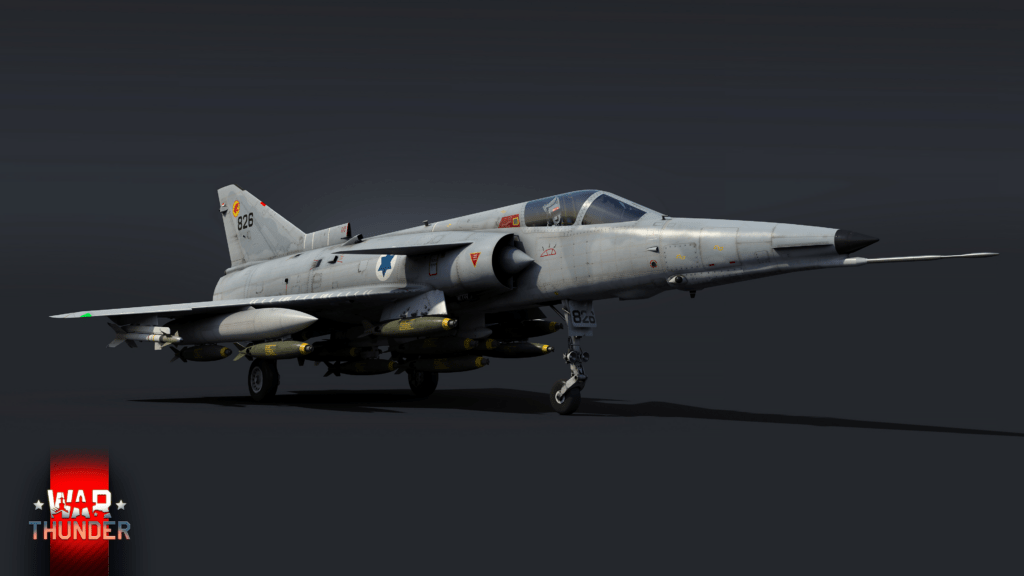
The DCS World Kfir module provides players with an authentic simulation of the Kfir’s systems, weapons, and combat roles. This legendary fighter was designed to deliver versatile performance in a variety of missions, making it a cornerstone of the Israeli Air Force (IAF) and a valuable asset for its export customers.
The Kfir’s systems and weapons reflect a blend of indigenous innovation and powerful off-the-shelf technology, enabling it to excel in multiple combat scenarios.
Avionics and Systems
The Kfir’s avionics suite was modernized to meet the operational requirements of the 1970s and 1980s, ensuring that it could compete with the latest adversaries in the field. Key systems included:
- Radar System
The Kfir was equipped with a multi-mode radar capable of providing reliable air-to-air and air-to-ground targeting solutions. While not as advanced as modern radars, it was effective for the time, enabling pilots to identify and engage targets with precision. - Weapons Management System
The aircraft featured an advanced weapons management system that allowed for the integration of a wide variety of ordnance, from guided air-to-ground munitions to air-to-air missiles. This versatility made the Kfir a true multi-role platform. - Heads-Up Display (HUD)
The HUD provided critical flight and targeting data, allowing pilots to maintain situational awareness during high-stress combat scenarios. - Electronic Countermeasures (ECM)
To counter modern threats, the Kfir included ECM systems designed to jam or deceive enemy radar-guided missiles and targeting systems. This was particularly crucial when operating in contested airspaces. - Navigation System
The Kfir’s navigation system supported low-level penetration missions and high-speed ingress into enemy territory, with enhanced precision for strike missions.
Weapons Loadout
The Kfir’s ability to carry a wide variety of weapons was a key factor in its operational success. The DCS World Kfir module faithfully recreates these loadouts, giving players access to:
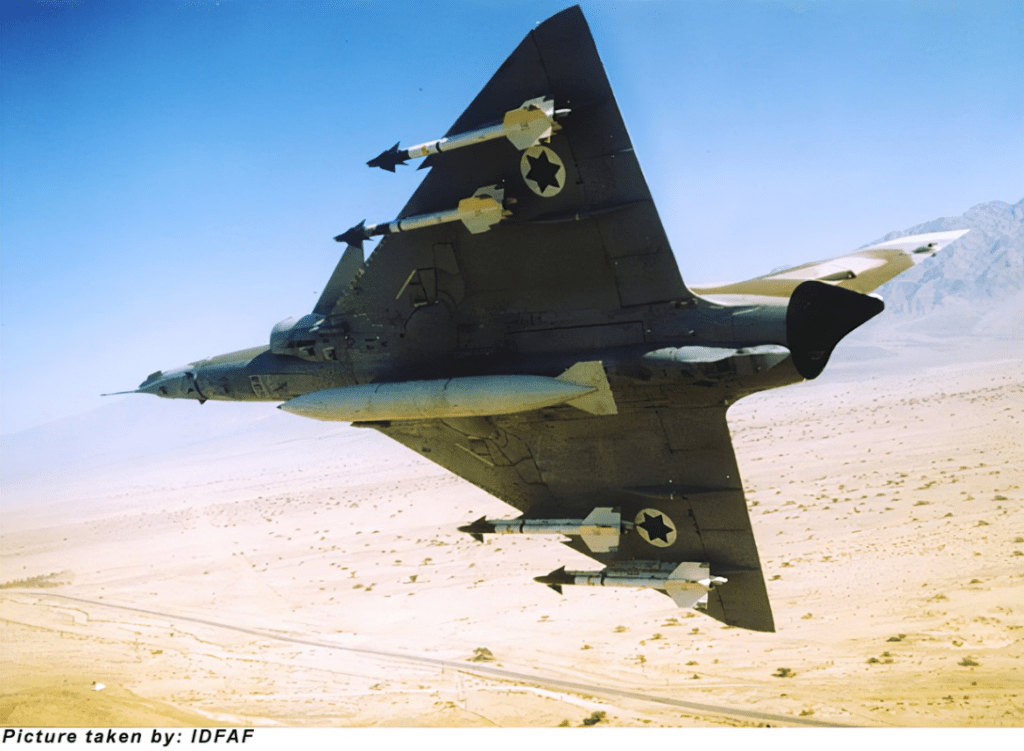
- Air-to-Air Weapons
- Shafir 2: An Israeli-developed infrared-guided missile designed for close-range dogfights, effective against agile adversaries like the MiG-21.
- Python 3: A more advanced short-range missile with greater maneuverability and improved tracking capabilities.
- AIM-9 Sidewinder (Export Versions): Some export models of the Kfir were equipped with American-made Sidewinder missiles, enhancing their air-to-air lethality.
- Air-to-Ground Munitions
- Unguided Bombs: A variety of general-purpose bombs for tactical ground strikes.
- Cluster Munitions: Effective against armored formations and infantry concentrations.
- Laser-Guided Bombs (LGBs): Some variants could carry guided munitions for precision strikes.
- Cannons
- The Kfir was equipped with two internal 30mm DEFA cannons, providing a devastating close-range option for air-to-air and ground attack missions.
- The Kfir was equipped with two internal 30mm DEFA cannons, providing a devastating close-range option for air-to-air and ground attack missions.
- External Fuel Tanks
- To extend its operational range, the Kfir could carry external fuel tanks, although this impacted maneuverability.
- Latest CPU’s Available Now – Amazon.com
- Get a NEW GPU Best Performance – AMAZON.com
- Upgrade RAM Here today – AMAZON.com
- Prebuilt PC Options – AMAZON.com
Combat Roles
The Kfir was designed as a multi-role fighter, capable of performing a wide range of missions in various combat scenarios. Its roles included:
- Air Superiority
The Kfir was deployed to maintain control of the skies, engaging enemy fighters in dogfights and intercept missions. Its high speed and energy-focused performance allowed it to dictate the terms of engagement against many adversaries. - Ground Attack
The Kfir excelled in ground-attack missions, delivering precision strikes on enemy infrastructure, armored columns, and troop concentrations. Its combination of high-speed ingress and a versatile weapons loadout made it a formidable strike platform. - Close Air Support (CAS)
With its ability to carry unguided and guided munitions, the Kfir provided effective support for ground forces, neutralizing threats in close proximity to friendly units. - Interdiction
The Kfir was often tasked with deep-strike missions into enemy territory, targeting supply lines, command centers, and airbases to disrupt enemy operations. - Export Roles
In export service, the Kfir filled a variety of roles tailored to the needs of its operators, including counter-insurgency operations and maritime strike missions.
Combat History

Operational Use
The Kfir entered service with the Israeli Air Force (IAF) in 1975. While its tenure was relatively short, it played a pivotal role in securing Israeli airspace. The aircraft saw action in operations like Litani (1978) and during the early stages of the 1982 Lebanon War, providing close air support and strike capabilities.
Global Operators
Beyond Israel, the Kfir saw export success. Operators included Colombia, Ecuador, and Sri Lanka, where it participated in various conflicts:
- Colombia: Used extensively against rebel groups and narcotics operations.
- Sri Lanka: Played a critical role during the Sri Lankan Civil War, conducting airstrikes against LTTE strongholds.
- Ecuador: Engaged in skirmishes during the Canepa War.
Kfir Combat Achievements
The DCS World Kfir module highlights the operational successes of this iconic fighter, known for its combat achievements across various theaters. While primarily utilized in ground-attack and strike missions, the Kfir also earned a reputation in air-to-air combat. Its notable achievements include engagements where it secured air superiority against agile adversaries like the MiG-21 and MiG-23, particularly during Israeli Air Force operations. In export service, the Kfir contributed to the air combat successes of nations such as Colombia and Ecuador, adding to its legacy as a versatile and capable multi-role fighter.
Variants of the Kfir
The Kfir family includes several iterations, each tailored for specific operational needs:
- Kfir C.1: The initial production model with basic avionics and armament.
- Kfir C.2: Improved aerodynamics with canards and enhanced weaponry.
- Kfir C.7: Upgraded engine, better avionics, and increased payload.
- Kfir TC.2/TC.7: Twin-seat trainer versions.
- Kfir CE/C10: Export models featuring modern avionics for countries like Ecuador and Colombia.
Significance in DCS World

The DCS World Kfir promises to capture this aircraft’s unique charm, blending old-school dogfighting techniques with cutting-edge strike capabilities. Players can expect:
- A meticulously recreated cockpit, including the iconic HUD and control systems.
- A dynamic flight model reflecting the Kfir’s powerful engine and delta-wing performance.
- Compatibility with a wide array of weaponry and mission profiles.
The KFIR will bring another third-generation aircraft to the table since we have plenty of MIGs especially in the 80’s Cold War arenas. Currently the MIG-21 is the major adversary to the Heatblur F-4 Phantom, so this is another to compete squarely in this time. I personally worked on the Mirage IIIO in the 80s and this is a supercharged one of those. I’ve personally seen F-16s and F-15s in Mirage IIIO gun camera footage from Cape Thunder in the mid 80s. Not to be taken lightly!
Additional Resources
For enthusiasts eager to learn more about the Kfir, the Pilot’s Operating Handbook (POH) offers an in-depth look at its systems and procedures. While a comprehensive manual for the DCS module will accompany its release, exploring historical resources provides a head start in mastering this legendary fighter.
The DCS World Kfir module isn’t just a new aircraft—it’s a tribute to an era of innovation and adaptability. Whether you’re an aviation history buff or a combat simulation enthusiast, the Kfir promises a unique experience. Stay tuned for updates and prepare to take to the skies with this remarkable fighter!
Author
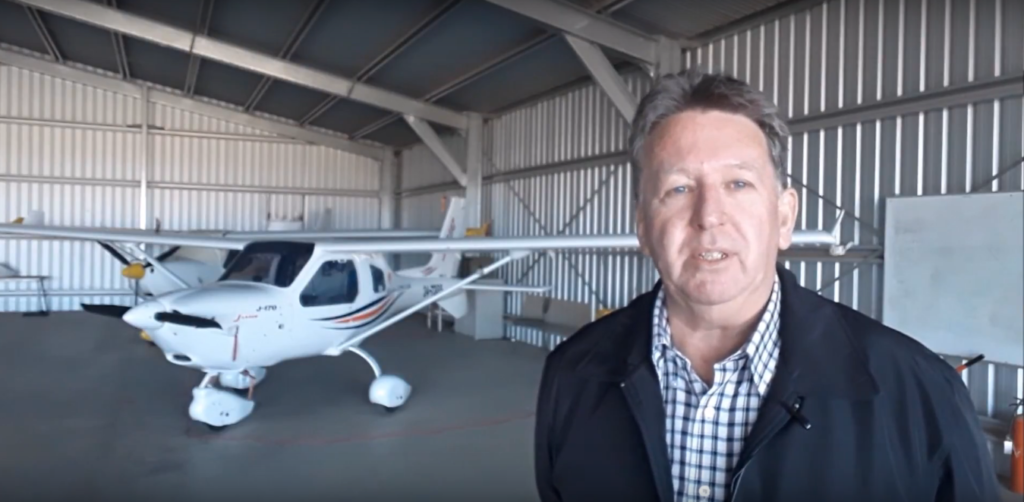
Brendon McAliece (Aka Gunnie) is a military veteran with 23 years working on Jet Fighters, their weapons systems and ejection seat/module systems as well as munitions and R&D. Involved with flight simulation since the 1980s, he has flown all the major flight simulators over the years.
He is an Australian expat who has lived in Malaysia, UK, Saudi Arabia and more recently Thailand. He is a multi-lingual blogger who loves to share his life experiences here on LetsFlyVFR.com and DreamingGuitar.com, with his lifestyle and Travel experiences Blog plus his Dreaming Coffee website.
Learn More @
DreamingGuitar.com – DreamingCoffee.com – LetsFlyVFR.com
( HOME – BLOG – SHOP – ABOUT )
As an Amazon affiliate I may benefit from qualifying sales.

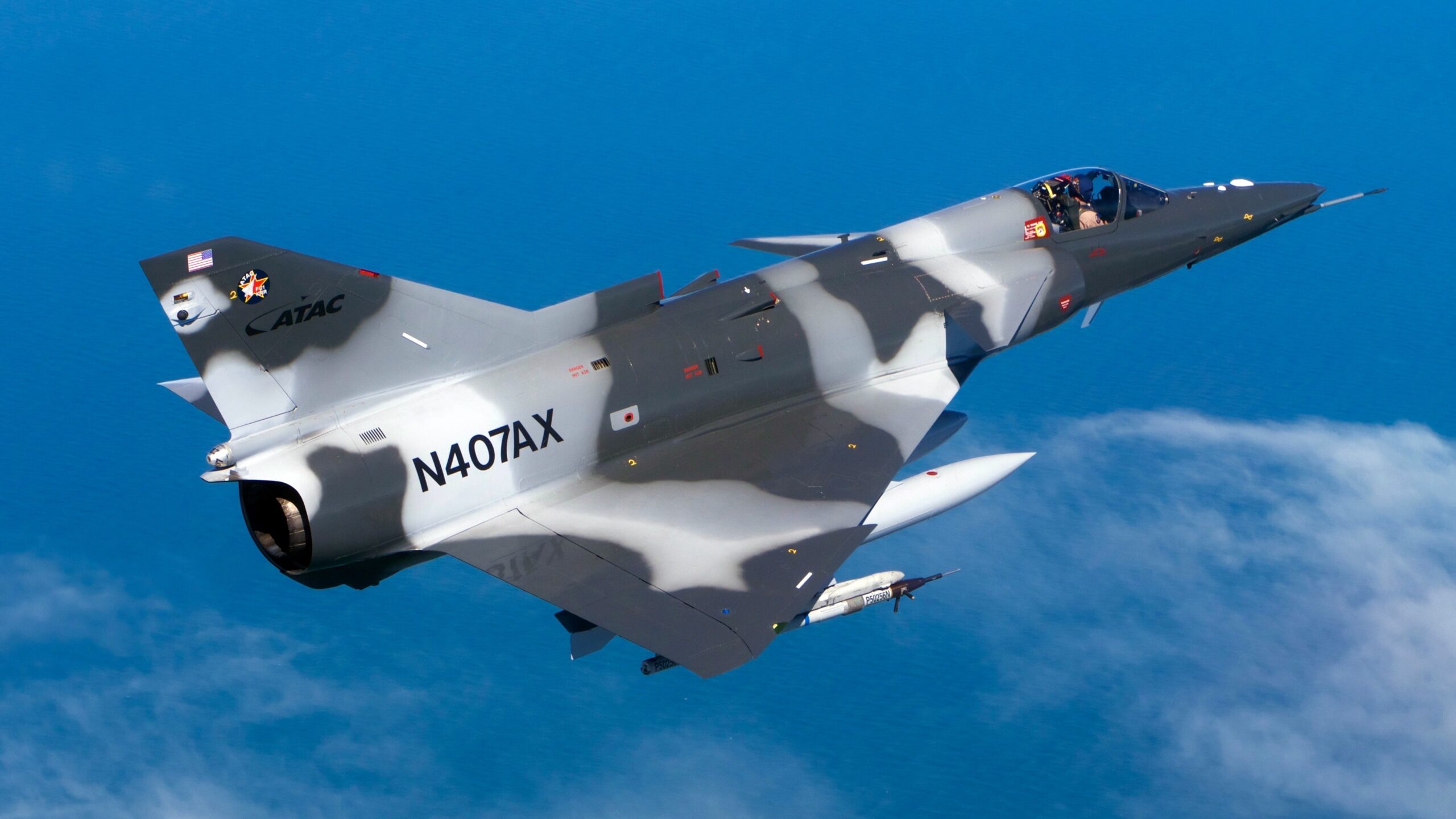
2 responses to “DCS World Kfir: Combat Proven in Real Life!”